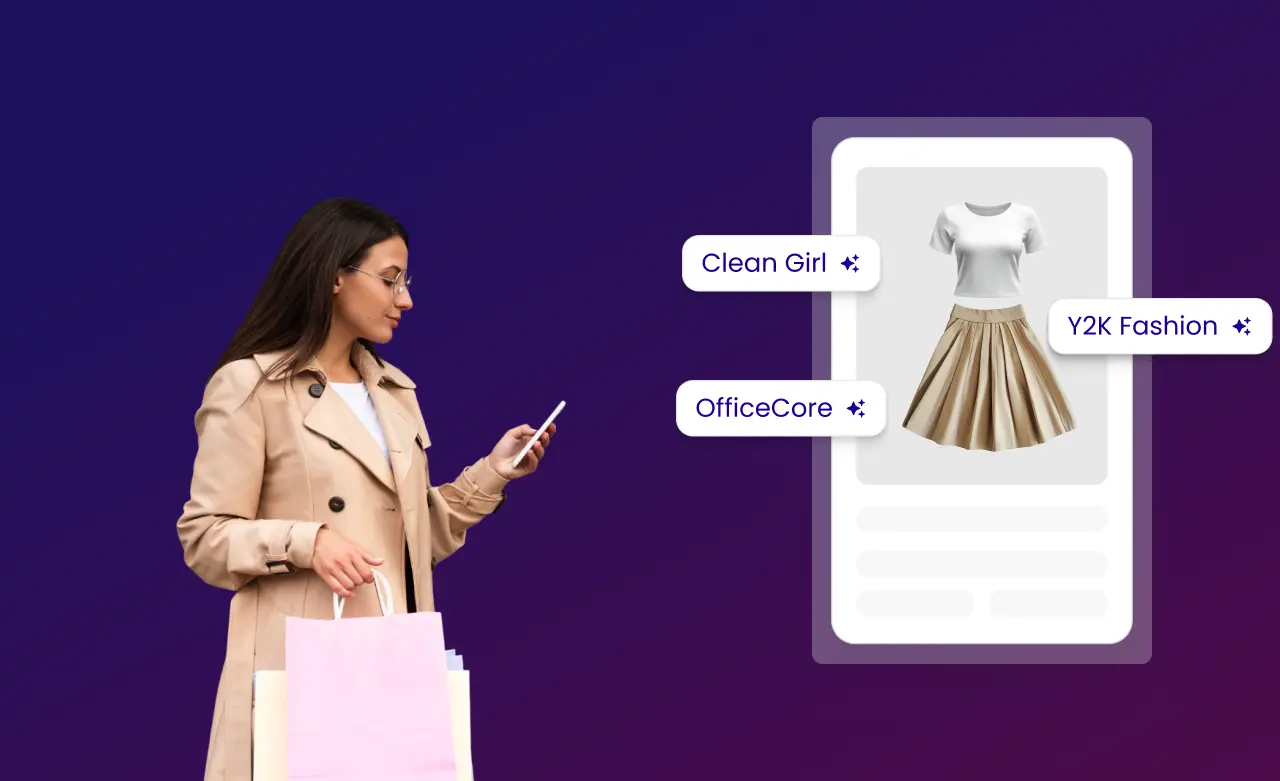How innovative sustainable fashion retailers are adopting AI machine learning

The global fashion industry accounts for 10% of the world's carbon emissions. Moreover, due to the increasing demand, this percentage is expected to rise to 24% by 2050, according to UNFCCC. Aside from the vast amounts of oil the industry uses, the substances that production processes release are toxic and represent a dangerous environmental pollutant. Additionally, production excess is often left in landfill sites without any recycling options.
Asian countries have a serious problem with these vast amounts of garbage because they are the home of the largest clothing factories for fast fashion. A survey by IBM showed that 20% of consumers throw away clothes they don't need. Moreover, one-third of respondents stated they believe that artificial intelligence (AI) will have the most significant impact on sustainability in the future.
As the technology offers various solutions such as AI product discovery, automatic tagging engines, ecommerce product recommendation engines and personal recommendations, it will doubtlessly transform the fashion industry. But, solving the sustainability crisis might be an enormous benefit we didn't see coming at first sight.
When it comes to the use of AI in fashion, the first association is the predictive analytics that can help fashion retailers improve results. Yes, AI can predict trends and make fashion retailers meet customer demands.
However, this ability can also be useful in tackling challenges related to fast fashion's constant vulnerability. When used wisely, this can eventually lead to reduced excesses and less waste in our environment.
Millennials to Drive the Demand of Second-Hand Clothing
It looks like all those Instagram and Twitter videos of enormous amounts of waste ruining beautiful natural sites woke up the consumer consciousness. Therefore, millennials are leading the sustainable mindset. Many of them regularly check how their favorite fashion pieces are made. A report by Nielsen discovered that 73% of millennials prefer sustainable brands. However, if the world wants sustainable fashion, it has to make some serious changes.
One of the solutions to this significant issue is second-hand clothing, a market expected to reach $64 billion by 2024. Considering the environmental effect of fast retail, consumers progressively focusing on sustainability are seeking to purchase more second-hand fashion pieces. The shift to a more circular fashion economy is the result of the increased awareness of sustainability among global younger buyers who appreciate businesses driven by purpose. 52% of British millennials have purchased second-hand items during 2019. Moreover, 50% of them say they sell unwanted clothes. China seems to be the world's largest sharing economy. A WEF report claims that the Chinese rental, sharing, and resale fashion market will account for 20% of the country's GDP by 2025.
How Does AI Fit in the Story?
Artificial Intelligence is a powerful technology with the ability to help fashion retailers leverage the power of innovation and, at the same, time make their activities more sustainable. Today we can define AI as a set of smart programs that accomplish tasks faster and more efficiently than humans.
This is a research field that includes, among others, machine learning, deep learning, natural language processing, and visual recognition.
AI uses large quantities of data to generate valuable insights, helping fashion retailers to produce smartly and create a more sustainable business model. This includes recognizing the importance of product attributes, which play a crucial role in tailoring offerings to meet customer needs effectively and structuring an ecommerce product taxonomy that simplifies product categorization and enhances customer experience. The implementation of AI at various levels of the production process, from design to logistics, makes operations smart. It begins at the first phase with information i.e., market prediction and demand preparation, eventually making the business more sustainable.
A McKinsey report also confirmed this, stating that AI can reduce prediction errors by 50% and overall stock amounts by 20-50%.
Suggested read: Personalizing the Second-Hand Clothing Experience With AI
Sustainable Fashion Retailers Driven by AI
Many innovative fashion retailers have recognized the potential of AI and decided to leverage it and become sustainable. For example, Sorabel (formerly Sale Stock) leverages AI to maintain low inventory risk while delivering fashionable items at affordable prices. Their AI engine predicts fashion trends, providing forecasts on styles that are most likely to sell. This feature allows the company to cut waste by producing items that customers will purchase.
Next, Nike is investing in Grabit robots that can produce a piece of sneaker in 50-75 seconds, while a human needs around 20 minutes to do the same thing. Although this is a significant investment for the company, the robots' efficiency can bring substantial long-term savings. More importantly, examples like this have the potential to bring manufacturing back to Europe and the US. Higher salaries for employees in wealthy countries make automation the most feasible form of making clothing, which has been highly reliant on low-wage jobs in more impoverished countries until now.

Project Cece is also one great example. This Dutch tech fashion startup has created an online marketplace for sustainable clothing. They implemented Pixyle’s visual AI engine to take their platform one step further and allow users to find sustainable versions of their desired items simply by uploading photos of them.
Rent the Runway leverages machine learning to identify a customer's fashion preferences precisely and customize their style with the latest trends, but only if they take a chance in renting their limited selection of second-hand designer clothes. Aside from offering a personalized experience instead of a generic one, the company also wants to minimize risk in the rental market. Namely, the machine learning technology allows them to detect similarities among customers who have lost, stolen, or destroyed rentals, using them to predict potential abuses and minimize future exposure.
Finally, H&M uses AI-based advanced analytics to detect trends and plan stocks and reduce the masses of unsold inventory. They also leverage it to analyze supply and demand, and distribute an appropriate amount of items to each location, minimizing yet again the amount of discarded products. They merge analytics and AI with human intelligence at the H&M community to use what is regarded as Amplified Intelligence.

Discover Pixyle Ultimate Dress type Taxonomy Guide
Learn how to structure your catalog in a way that matches how people actually shop.


Boost your sales with AI product tagging
Optimize your eCommerce catalog to improve discovery and conversions.







